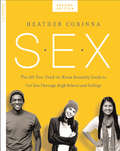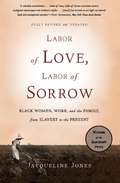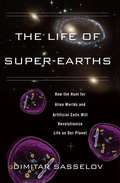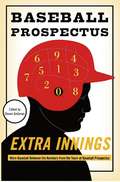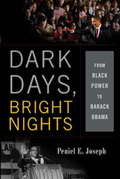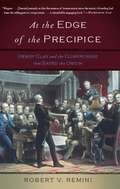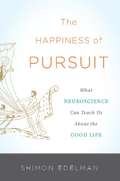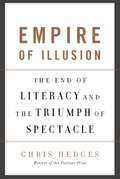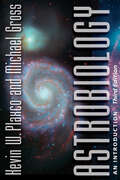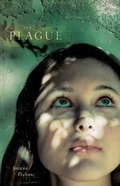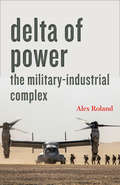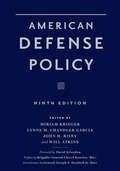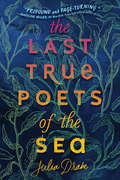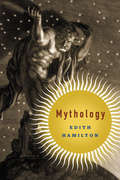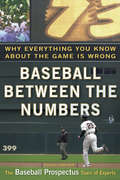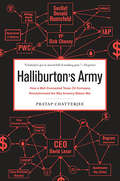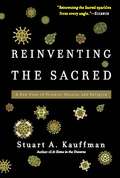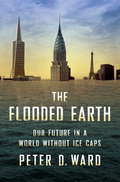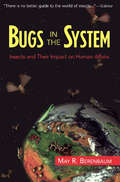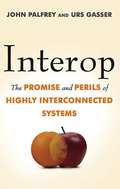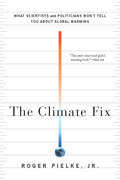- Table View
- List View
S.E.X., second edition: The All-You-Need-To-Know Sexuality Guide to Get You Through Your Teens and Twenties
by Heather CorinnaThe go-to sex ed guide for teens and young adults, tackling everything you want to know about sex, from consent, safe sex, emotional health and more, from the founder of scarleteen.com. As a teen or emerging adult, dealing with all the changes going on in your life, body, and mind can be mighty overwhelming. When it comes to sex, everyone seems to have strong feelings and opinions about who you should be and what you should (shouldn't) do. How do you decide who to listen to? Heather Corinna and Scarleteen have provided sex education and information to millions of young people, parents, and mentors since 1998; S.E.X. tackles all the big topics:Self-image and how to find and claim your own sexual selfHow to best protect and support your sexual and emotional healthSorting out gender and sexual identities, even when they're complicated and confusingThe latest on contraceptive methods and other reproductive choices, sexually transmitted infections, and safer sexFinding, creating, and managing healthy and happy relationshipsHow to set and respect limits and boundaries, and rock consentIdentifying, preventing, or healing from abuse or assault...and much more. Whatever your gender or sexual identity, whether you've already been actively exploring your sexuality or are only just getting curious, S.E.X clearly spells out what you need and want to know--no shame, no judgement, just comprehensive and accurate info in a clear, straightforward language.
Labor of Love, Labor of Sorrow: Black Women, Work, and the Family, from Slavery to the Present
by Jacqueline JonesThe forces that shaped the institution of slavery in the American South endured, albeit in altered form, long after slavery was abolished. Toiling in sweltering Virginia tobacco factories or in the kitchens of white families in Chicago, black women felt a stultifying combination of racial discrimination and sexual prejudice. And yet, in their efforts to sustain family ties, they shared a common purpose with wives and mothers of all classes.In Labor of Love, Labor of Sorrow, historian Jacqueline Jones offers a powerful account of the changing role of black women, lending a voice to an unsung struggle from the depths of slavery to the ongoing fight for civil rights.
The Life of Super-Earths: How the Hunt for Alien Worlds and Artificial Cells Will Revolutionize Life on Our Planet
by Dimitar SasselovIn 1543, Nicolaus Copernicus fomented a revolution when he debunked the geocentric view of the universe, proving instead that our planet wasn&’t central to the universe. Almost five hundred years later, the revolution he set in motion is nearly complete. Just as earth is not the center of things, the life on it, it appears, is not unique to the planet. Or is it? The Life of Super-Earths is a breathtaking tour of current efforts to answer the age-old question: Are we alone in the universe? Astronomer Dimitar Sasselov, the founding director of Harvard University&’s Origins of Life Initiative, takes us on a fast-paced hunt for habitable planets and alien life forms. He shows how the search for &“super-Earths&”—rocky planets like our own that orbit other stars—may provide the key to answering essential questions about the origins of life here and elsewhere. That is, if we don&’t find the answers to those questions here first. As Sasselov and other astronomers have uncovered planets with mixes of elements different from our own, chemists have begun working out the heretofore unseen biochemistries that those planets could support. That knowledge is feeding directly into synthetic biology—the effort to build wholly novel forms of life—making it likely that we will first discover truly &“alien&” life forms in an earthly lab, rather than on a remote planet thousands of light years away. Sasselov tells the gripping story of a moment of unprecedented potential—a convergence of pioneering efforts in astronomy and biology to peer into the unknown. The Life of Super-Earths offers nothing short of a transformation in our understanding of life and its place in the cosmos.
Extra Innings: More Baseball Between the Numbers from the Team at Baseball Prospectus
by The Baseball ProspectusIn 1996, a brassy young team of fansproduced a guide to baseball statistics.Printed on a photocopier, its distribution,which was in the low hundreds, was limited tofriends, family, and die-hard stat heads. Sixteenyears later, the Baseball Prospectus annualregularly hits best-seller lists and has becomean indispensable guide for the serious fan. In Extra Innings, the team at Baseball Prospectusintegrates statistics, interviews, and analysis todeliver twenty arguments about today's game.In the tradition of their seminal book, BaseballBetween the Numbers, they take on everything fromsteroids to the amateur draft. They probe theimpact of managers on the game. They explainthe critical art of building a bullpen. In an erawhen statistics matter more than ever, Extra Inningsis an essential volume for every baseball fan.
Dark Days, Bright Nights: From Black Power to Barack Obama
by Peniel E. JosephThe Civil Rights Movement is now remembered as a long-lost era, which came to an end along with the idealism of the 1960s. In Dark Days, Bright Nights, acclaimed scholar Peniel E. Joseph puts this pat assessment to the test, showing the 60s -- particularly the tumultuous period after the passage of the 1965 Voting Rights Act -- to be the catalyst of a movement that culminated in the inauguration of Barack Obama. Joseph argues that the 1965 Voting Rights Act burst a dam holding back radical democratic impulses. This political explosion initially took the form of the Black Power Movement, conventionally adjudged a failure. Joseph resurrects the movement to elucidate its unfairly forgotten achievements. Told through the lives of activists, intellectuals, and artists, including Malcolm X, Huey P. Newton, Amiri Baraka, Tupac Shakur, and Barack Obama, Dark Days, Bright Nights will make coherent a fraught half-century of struggle, reassessing its impact on American democracy and the larger world.
At the Edge of the Precipice: Henry Clay and the Compromise That Saved the Union
by Robert V. ReminiIn 1850, America hovered on the brink of disunion. Tensions between slave-holders and abolitionists mounted, as the debate over slavery grew rancorous. An influx of new territory prompted Northern politicians to demand that new states remain free; in response, Southerners baldly threatened to secede from the Union. Only Henry Clay could keep the nation together.At the Edge of the Precipice is historian Robert V. Remini's fascinating recounting of the Compromise of 1850, a titanic act of political will that only a skillful statesman like Clay could broker. Although the Compromise would collapse ten years later, plunging the nation into civil war, Clay's victory in 1850 ultimately saved the Union by giving the North an extra decade to industrialize and prepare. A masterful narrative by an eminent historian, At the Edge of the Precipice also offers a timely reminder of the importance of bipartisanship in a bellicose age.
The Happiness of Pursuit: What Neuroscience Can Teach Us About the Good Life
by Shimon EdelmanWhen fishing for happiness, catch and release. Remember these seven words-they are the keys to being happy. So says Shimon Edelman, an expert on psychology and the mind. In The Happiness of Pursuit, Edelman offers a fundamental understanding of pleasure and joy via the brain. Using the concept of the mind as a computing device, he unpacks how the human brain is highly active, involved in patterned networks, and constantly learning from experience. As our brains predict the future through pursuit of experience, we are rewarded both in real time and in the long run. Essentially, as Edelman discovers, it's the journey, rather than the destination, that matters. The idea that cognition is computation-the brain is a machine-is nothing new of course. But, as Edelman argues, the mind is actually a bundle of ongoing computations, essentially, the brain being one of many possible substrates that can support them. Edelman makes the case for these claims by constructing a conceptual toolbox that offers readers a glimpse of the computations underlying the mind's faculties: perception, motivation and emotions, action, memory, thinking, social cognition, learning and language. It is this collection of tools that enables us to discover how and why happiness happens.An informative, accessible, and witty tour of the mind, The Happiness of Pursuit offers insights to a thorough understanding of what minds are, how they relate to each other and to the world, and how we can make the best of it all.
Empire of Illusion: The End of Literacy and the Triumph of Spectacle
by Chris HedgesA prescient book that forecast the culture that gave rise to Trump -- a society beholden to empty spectacle and obsession with image at the expense of reality, reason, and truth.An instant bestseller, Empire of Illusion is a striking and unsettling exploration of illusion and fantasy in contemporary American culture. Traveling to the ringside of professional wrestling bouts at Madison Square Garden, to Las Vegas to write about the pornographic film industry, and to academic conferences held by positive psychologists who claim to be able to engineer happiness, Hedges chronicles our flight from an ever-worsening reality. The cultural embrace of illusion and celebrity culture have accompanied a growing system of casino capitalism, which creates vast wealth for elites. Corporations have ruthlessly dismantled and destroyed our manufacturing base and impoverished our working class. Hedges exposes the mechanisms that undermine our democracy and divert us from the economic, environmental, political, and moral collapse around us. A culture that cannot distinguish between reality and illusion dies, Hedges argues, and we are dying now.
Astrobiology: An Introduction
by Kevin W. Plaxco Michael GrossExploring the potential for extraterrestrial life and the origins of our own planet, this comprehensive introduction to astrobiology is updated with the latest findings.Informed by the discoveries and analyses of extrasolar planets and the findings from recent robotic missions across the solar system, scientists are rapidly replacing centuries of speculation about potential extraterrestrial habitats with real knowledge about the possibility of life outside our own biosphere—if it exists, and, if so, where. Casting new light on the biggest questions there are—how did we get here, and who else might be out there?—this third edition of Kevin W. Plaxco and Michael Gross's widely acclaimed Astrobiology incorporates a decade's worth of new developments in space to bring readers the most comprehensive, up-to-date, and engaging introduction to the field available.Plaxco and Gross examine the factors that make our Universe habitable, from the origin of chemical elements and the formation of the first galaxies and stars to the birth and composition of the planets. They describe the latest thinking about the origins of life, explain the evolution of metabolism and the development of complex organisms. In order to assess the limits for life elsewhere, they also explore life in extreme habitats and reveal how it informs the search for potential extraterrestrial habitats—ones that might support extraterrestrial life. New and updated illustrations enhance the book throughout.Sharing fascinating findings from the comet mission Dawn, the visit of New Horizons to Pluto, and the work of the Deep Carbon Observatory, which has revealed an incredible underground biosphere within our own planet, Plaxco and Gross weave together cosmology, astrophysics, geology, biochemistry, biophysics, and microbiology. From neutron star mergers to the survival skills of tardigrades, this fascinating book is an ideal primer for students or anyone curious about life and the Universe.
Astrobiology: An Introduction
by Kevin W. Plaxco Michael GrossExploring the potential for extraterrestrial life and the origins of our own planet, this comprehensive introduction to astrobiology is updated with the latest findings.Informed by the discoveries and analyses of extrasolar planets and the findings from recent robotic missions across the solar system, scientists are rapidly replacing centuries of speculation about potential extraterrestrial habitats with real knowledge about the possibility of life outside our own biosphere—if it exists, and, if so, where. Casting new light on the biggest questions there are—how did we get here, and who else might be out there?—this third edition of Kevin W. Plaxco and Michael Gross's widely acclaimed Astrobiology incorporates a decade's worth of new developments in space to bring readers the most comprehensive, up-to-date, and engaging introduction to the field available.Plaxco and Gross examine the factors that make our Universe habitable, from the origin of chemical elements and the formation of the first galaxies and stars to the birth and composition of the planets. They describe the latest thinking about the origins of life, explain the evolution of metabolism and the development of complex organisms. In order to assess the limits for life elsewhere, they also explore life in extreme habitats and reveal how it informs the search for potential extraterrestrial habitats—ones that might support extraterrestrial life. New and updated illustrations enhance the book throughout.Sharing fascinating findings from the comet mission Dawn, the visit of New Horizons to Pluto, and the work of the Deep Carbon Observatory, which has revealed an incredible underground biosphere within our own planet, Plaxco and Gross weave together cosmology, astrophysics, geology, biochemistry, biophysics, and microbiology. From neutron star mergers to the survival skills of tardigrades, this fascinating book is an ideal primer for students or anyone curious about life and the Universe.
The Plague
by Joanne DahmeIn a land overshadowed by death, fifteen year-old Nell's uncanny resemblance to Princess Joan brings her to act as her double -- what young girl wouldn't want to leave a life of poverty and pretend to be a princess? But when the plague catches up to the royal entourage, thwarting the King's plan for the princess to marry the Prince of Castile and seal an alliance between their kingdoms, Nell's life could change forever. Princess Joan's brother The Black Prince schemes to make the wedding go on declaring Nell will no longer double for Joan, she will become the princess and dupe Prince Pedro into marriage! With the aid and protection of a quirky band of friends -- a Spanish minstrel, a monk, a gravedigger, a band of merchants -- Nell must evade not only the Black Prince, a practitioner of the dark arts, but the plague as well, as she fights to return to the King and country. Based on historical truth, Dahme beautifully captures the dark terror of a Plague-infested fourteenth century Europe, while bringing to life the daily existence of medieval life for young adult readers.
Delta of Power: The Military-Industrial Complex (Technology in Motion)
by Alex RolandDoes the Military-Industrial Complex as we understand it still exist? If so, how has it changed since the end of the Cold War?First named by President Dwight D. Eisenhower in his farewell address, the Military-Industrial Complex, originally an exclusively American phenomenon of the Cold War, was tailored to develop and produce military technologies equal to the existential threat perceived to be posed by the Soviet Union. An informal yet robust relationship between the military and industry, the MIC pursued and won a qualitative, technological arms race but exacted a high price in waste, fraud, and abuse. Today, although total US spending on national security exceeds $1 trillion a year, it accounts for a smaller percentage of the federal budget, the national GDP, and world military spending than during the Cold War. Given this fact, is the MIC as we commonly understand it still alive? If so, how has it changed in the intervening years?In Delta of Power, Alex Roland tells the comprehensive history of the MIC from 1961, the Cold War, and the War on Terror, to the present day. Roland argues that the MIC is now significantly different than it was when Eisenhower warned of its dangers, still exerting a significant but diminished influence in American life. Focusing intently on the three decades since the end of the Cold War in 1991, Roland explains how a lack of cohesion, rapid change, and historical contingency have transformed America's military-industrial institutions and infrastructure. Roland addresses five critical realms of transformation: civil-military relations, relations between industry and the state, among government agencies, between scientific-technical communities and the state, and between technology and society. He also tracks the way in which America's arsenal has evolved since 1991. The MIC still merits Eisenhower's warning of political and moral hazard, he concludes, but it continues to deliver, by a narrower margin, the world's most potent arsenal. An authoritative account of America's evolving arsenal since World War II, Delta of Power is a dynamic exploration of military preparedness and current events.
Delta of Power: The Military-Industrial Complex (Technology in Motion)
by Alex RolandDoes the Military-Industrial Complex as we understand it still exist? If so, how has it changed since the end of the Cold War?First named by President Dwight D. Eisenhower in his farewell address, the Military-Industrial Complex, originally an exclusively American phenomenon of the Cold War, was tailored to develop and produce military technologies equal to the existential threat perceived to be posed by the Soviet Union. An informal yet robust relationship between the military and industry, the MIC pursued and won a qualitative, technological arms race but exacted a high price in waste, fraud, and abuse. Today, although total US spending on national security exceeds $1 trillion a year, it accounts for a smaller percentage of the federal budget, the national GDP, and world military spending than during the Cold War. Given this fact, is the MIC as we commonly understand it still alive? If so, how has it changed in the intervening years?In Delta of Power, Alex Roland tells the comprehensive history of the MIC from 1961, the Cold War, and the War on Terror, to the present day. Roland argues that the MIC is now significantly different than it was when Eisenhower warned of its dangers, still exerting a significant but diminished influence in American life. Focusing intently on the three decades since the end of the Cold War in 1991, Roland explains how a lack of cohesion, rapid change, and historical contingency have transformed America's military-industrial institutions and infrastructure. Roland addresses five critical realms of transformation: civil-military relations, relations between industry and the state, among government agencies, between scientific-technical communities and the state, and between technology and society. He also tracks the way in which America's arsenal has evolved since 1991. The MIC still merits Eisenhower's warning of political and moral hazard, he concludes, but it continues to deliver, by a narrower margin, the world's most potent arsenal. An authoritative account of America's evolving arsenal since World War II, Delta of Power is a dynamic exploration of military preparedness and current events.
American Defense Policy
by Miriam Krieger Lynne M. Chandler Garcia John H. Riley Will AtkinsA vital text for understanding the twenty-first-century battlefield and the shifting force structure, this book prepares students to think critically about the rapidly changing world they'll inherit.American Defense Policy, first published in 1965 under the leadership of Brent Scowcroft, has been a mainstay in courses on political science, international relations, military affairs, and American national security for more than 50 years. This updated and thoroughly revised ninth edition, which contains about 30% all-new content, considers questions of continuity and change in America's defense policy in the face of a global climate beset by geopolitical tensions, rapid technological change, and terrorist violence.The book is organized into three parts. Part I examines the theories and strategies that shape America's approach to security policy. Part II dives inside the defense policy process, exploring the evolution of contemporary civil-military relations, the changing character of the profession of arms, and the issues and debates in the budgeting, organizing, and equipping process. Part III examines how purpose and process translate into American defense policy. This invaluable and prudent text remains a classic introduction to the vital security issues the United States has faced throughout its history. It breaks new ground as a thoughtful and comprehensive starting point to understand American defense policy and its role in the world today.Contributors: Gordon Adams, John R. Allen, Will Atkins, Deborah D. Avant, Michael Barnett, Sally Baron, Jeff J.S. Black, Jessica Blankshain, Hal Brands, Ben Buchanan, Dale C. Copeland, Everett Carl Dolman, Jeffrey Donnithorne, Daniel W. Drezner, Colin Dueck, Eric Edelman, Martha Finnemore, Lawrence Freedman, Francis Fukuyama, Michael D. Gambone, Lynne Chandler Garcia, Bishop Garrison, Erik Gartzke, Mauro Gilli, Robert Gilpin, T.X. Hammes, Michael C. Horowitz, G. John Ikenberry, Bruce D. Jones, Tim Kane, Cheryl A. Kearney, David Kilcullen, Michael P. Kreuzer, Miriam Krieger, Seth Lazar, Keir A. Lieber, Conway Lin, Jon R. Lindsay, Austin Long, Joseph S. Lupa Jr., Megan H. MacKenzie, Mike J. Mazarr, Senator John McCain, Daniel H. McCauley, Michael E. McInerney, Christopher D. Miller, James N. Miller, John A. Nagl, Henry R. Nau, Renée de Nevers, Joseph S. Nye Jr., Michael E. O'Hanlon, Mancur Olson Jr., Sue Payton, Daryl G. Press, Thomas Rid, John Riley, David Sacko, Brandon D. Smith, James M. Smith, Don M. Snider, Sir Hew Strachan, Michael Wesley, Richard Zeckhauser
American Defense Policy
by Miriam Krieger, Lynne Chandler Garcia, John Riley, and Will AtkinsA vital text for understanding the twenty-first-century battlefield and the shifting force structure, this book prepares students to think critically about the rapidly changing world they'll inherit.American Defense Policy, first published in 1965 under the leadership of Brent Scowcroft, has been a mainstay in courses on political science, international relations, military affairs, and American national security for more than 50 years. This updated and thoroughly revised ninth edition, which contains about 30% all-new content, considers questions of continuity and change in America's defense policy in the face of a global climate beset by geopolitical tensions, rapid technological change, and terrorist violence.The book is organized into three parts. Part I examines the theories and strategies that shape America's approach to security policy. Part II dives inside the defense policy process, exploring the evolution of contemporary civil-military relations, the changing character of the profession of arms, and the issues and debates in the budgeting, organizing, and equipping process. Part III examines how purpose and process translate into American defense policy. This invaluable and prudent text remains a classic introduction to the vital security issues the United States has faced throughout its history. It breaks new ground as a thoughtful and comprehensive starting point to understand American defense policy and its role in the world today.Contributors: Gordon Adams, John R. Allen, Will Atkins, Deborah D. Avant, Michael Barnett, Sally Baron, Jeff J.S. Black, Jessica Blankshain, Hal Brands, Ben Buchanan, Dale C. Copeland, Everett Carl Dolman, Jeffrey Donnithorne, Daniel W. Drezner, Colin Dueck, Eric Edelman, Martha Finnemore, Lawrence Freedman, Francis Fukuyama, Michael D. Gambone, Lynne Chandler Garcia, Bishop Garrison, Erik Gartzke, Mauro Gilli, Robert Gilpin, T.X. Hammes, Michael C. Horowitz, G. John Ikenberry, Bruce D. Jones, Tim Kane, Cheryl A. Kearney, David Kilcullen, Michael P. Kreuzer, Miriam Krieger, Seth Lazar, Keir A. Lieber, Conway Lin, Jon R. Lindsay, Austin Long, Joseph S. Lupa Jr., Megan H. MacKenzie, Mike J. Mazarr, Senator John McCain, Daniel H. McCauley, Michael E. McInerney, Christopher D. Miller, James N. Miller, John A. Nagl, Henry R. Nau, Renée de Nevers, Joseph S. Nye Jr., Michael E. O'Hanlon, Mancur Olson Jr., Sue Payton, Daryl G. Press, Thomas Rid, John Riley, David Sacko, Brandon D. Smith, James M. Smith, Don M. Snider, Sir Hew Strachan, Michael Wesley, Richard Zeckhauser
The Last True Poets of the Sea
by Julia DrakeFrom a new voice in YA literature comes an epic, utterly unforgettable contemporary novel about a lost shipwreck, a missing piece of family history, and weathering the storms of life. Fans of Far from the Tree, We Are Okay, and Emergency Contact will love this stunning debut."Profound and page-turning." --Madeline Miller, #1 New York Times best-selling author of CirceThe Larkin family isn't just lucky-they persevere. At least that's what Violet and her younger brother, Sam, were always told. When the Lyric sank off the coast of Maine, their great-great-great-grandmother didn't drown like the rest of the passengers. No, Fidelia swam to shore, fell in love, and founded Lyric, Maine, the town Violet and Sam returned to every summer. But wrecks seem to run in the family: Tall, funny, musical Violet can't stop partying with the wrong people. And, one beautiful summer day, brilliant, sensitive Sam attempts to take his own life. Shipped back to Lyric while Sam is in treatment, Violet is haunted by her family's missing piece-the lost shipwreck she and Sam dreamed of discovering when they were children. Desperate to make amends, Violet embarks on a wildly ambitious mission: locate the Lyric, lain hidden in a watery grave for over a century. She finds a fellow wreck hunter in Liv Stone, an amateur local historian whose sparkling intelligence and guarded gray eyes make Violet ache in an exhilarating new way. Whether or not they find the Lyric, the journey Violet takes-and the bridges she builds along the way-may be the start of something like survival. Epic, funny, and sweepingly romantic, The Last True Poets of the Sea is an astonishing debut about the strength it takes to swim up from a wreck.
Mythology: Timeless Tales Of Gods And Heroes (Mentor Ser.)
by Edith Hamilton Aphrodite Trust Apollo TrustThe world-renowned classic that has enthralled and delighted millions of readers with its timeless tales of gods and heroes.Edith Hamilton's mythology succeeds like no other book in bringing to life for the modern reader the Greek, Roman and Norse myths that are the keystone of Western culture-the stories of gods and heroes that have inspired human creativity from antiquity to the present.We follow the drama of the Trojan War and the wanderings of Odysseus. We hear the tales of Jason and the Golden Fleece, Cupid and Psyche, and mighty King Midas. We discover the origins of the names of the constellations. And we recognize reference points for countless works for art, literature and culture inquiry-from Freud's Oedipus complex to Wagner's Ring Cycle of operas to Eugene O'Neill's Mourning Becomes ElectraBoth a reference text for scholars of all ages and a book to simply enjoy, Mythology is a classic not to be missed.
Baseball Between the Numbers: Why Everything You Know About the Game Is Wrong
by Jonah Keri Baseball ProspectusIn the numbers-obsessed sport of baseball, statistics don't merely record what players, managers, and owners have done. Properly understood, they can tell us how the teams we root for could employ better strategies, put more effective players on the field, and win more games. The revolution in baseball statistics that began in the 1970s is a controversial subject that professionals and fans alike argue over without end. Despite this fundamental change in the way we watch and understand the sport, no one has written the book that reveals, across every area of strategy and management, how the best practitioners of statistical analysis in baseball-people like Bill James, Billy Beane, and Theo Epstein-think about numbers and the game. Baseball Between the Numbers is that book. In separate chapters covering every aspect of the game, from hitting, pitching, and fielding to roster construction and the scouting and drafting of players, the experts at Baseball Prospectus examine the subtle, hidden aspects of the game, bring them out into the open, and show us how our favorite teams could win more games. This is a book that every fan, every follower of sports radio, every fantasy player, every coach, and every player, at every level, can learn from and enjoy.
Halliburton's Army: How a Well-Connected Texas Oil Company Revolutionized the Way America Makes War
by Pratap ChatterjeeHalliburton'sArmy is the first book to show, in shocking detail, how Halliburton really does business, in Iraq, and around the world. From its vital role as the logistical backbone of the U.S. occupation in Iraq -- without Halliburton there could be no war or occupation -- to its role in covering up gang-rape amongst its personnel in Baghdad, Halliburton'sArmy is a devastating bestiary of corporate malfeasance and political cronyism. Pratap Chatterjee -- one of the world's leading authorities on corporate crime, fraud, and corruption -- shows how Halliburton won and then lost its contracts in Iraq, what Dick Cheney and Donald Rumsfeld did for it, and who the company paid off in the U.S. Congress. He brings us inside the Pentagon meetings, where Cheney and Rumsfeld made the decision to send Halliburton to Iraq -- as well as many other hot-spots, including Somalia, Yugoslavia, Uzbekistan, Afghanistan, Guantámo Bay, and, most recently, New Orleans. He travels to Dubai, where Halliburton has recently moved its headquarters, and exposes the company's freewheeling ways: executives leading the high life, bribes, graft, skimming, offshore subsidiaries, and the whole arsenal of fraud. Finally, Chatterjee reveals the human costs of the privatization of American military affairs, which is sustained almost entirely by low-paid unskilled Third World workers who work in incredibly dangerous conditions without any labor protection.Halliburton'sArmy is a hair-raising exposéf one of the world's most lethal corporations, essential reading for anyone concerned about the nexus of private companies, government, and war.
Reinventing the Sacred: A New View of Science, Reason, and Religion
by Stuart A. KauffmanConsider the complexity of a living cell after 3.8 billion years of evolution. Is it more awesome to suppose that a transcendent God fashioned the cell at a stroke, or to realize that it evolved with no Almighty Hand, but arose on its own in the changing biosphere?In this bold and fresh look at science and religion, complexity theorist Stuart Kauffman argues that the qualities of divinity that we revere-creativity, meaning, purposeful action-are properties of the universe that can be investigated methodically. He offers stunning evidence for this idea in an abundance of fields, from cell biology to the philosophy of mind, and uses it to find common ground between belief systems often at odds with one another.A daring and ambitious argument for a new understanding of natural divinity, Reinventing the Sacred challenges readers both scientifically and philosophically.
Horrid
by Katrina LenoFrom the author of You Must Not Miss comes a haunting contemporary horror novel that explores themes of mental illness, rage, and grief, twisted with spine-chilling elements of Stephen King and Agatha Christie.Following her father's death, Jane North-Robinson and her mom move from sunny California to the dreary, dilapidated old house in Maine where her mother grew up. All they want is a fresh start, but behind North Manor's doors lurks a history that leaves them feeling more alone . . . and more tormented.As the cold New England autumn arrives, and Jane settles in to her new home, she finds solace in old books and memories of her dad. She steadily begins making new friends, but also faces bullying from the resident "bad seed," struggling to tamp down her own worst nature in response. Jane's mom also seems to be spiraling with the return of her childhood home, but she won't reveal why. Then Jane discovers that the "storage room" her mom has kept locked isn't for storage at all -- it's a little girl's bedroom, left untouched for years and not quite as empty of inhabitants as it appears . . .Is it grief? Mental illness? Or something more . . . horrid?
The Flooded Earth: Our Future In a World Without Ice Caps
by Peter D. WardSea level rise will happen no matter what we do. Even if we stopped all carbon dioxide emissions today, the seas would rise one meter by 2050 and three meters by 2100. This-not drought, species extinction, or excessive heat waves-will be the most catastrophic effect of global warming. And it won't simply redraw our coastlines-agriculture, electrical and fiber optic systems, and shipping will be changed forever. As icebound regions melt, new sources of oil, gas, minerals, and arable land will be revealed, as will fierce geopolitical battles over who owns the rights to them.In The Flooded Earth, species extinction expert Peter Ward describes in intricate detail what our world will look like in 2050, 2100, 2300, and beyond-a blueprint for a foreseeable future. Ward also explains what politicians and policymakers around the world should be doing now to head off the worst consequences of an inevitable transformation.
Bugs In The System: Insects And Their Impact On Human Affairs
by May R. BerenbaumAn introduction to insect physiology, genetics and behaviour which looks at the interaction between humans and insects, and explores both the positive and negative aspects of the relationship.
Interop: The Promise and Perils of Highly Interconnected Systems
by John Palfrey Urs GasserIn Interop, technology experts John Palfrey and Urs Gasser explore the immense importance of interoperability-the standardization and integration of technology-and show how this simple principle will hold the key to our success in the coming decades and beyond.The practice of standardization has been facilitating innovation and economic growth for centuries. The standardization of the railroad gauge revolutionized the flow of commodities, the standardization of money revolutionized debt markets and simplified trade, and the standardization of credit networks has allowed for the purchase of goods using money deposited in a bank half a world away. These advancements did not eradicate the different systems they affected; instead, each system has been transformed so that it can interoperate with systems all over the world, while still preserving local diversity.As Palfrey and Gasser show, interoperability is a critical aspect of any successful system-and now it is more important than ever. Today we are confronted with challenges that affect us on a global scale: the financial crisis, the quest for sustainable energy, and the need to reform health care systems and improve global disaster response systems. The successful flow of information across systems is crucial if we are to solve these problems, but we must also learn to manage the vast degree of interconnection inherent in each system involved. Interoperability offers a number of solutions to these global challenges, but Palfrey and Gasser also consider its potential negative effects, especially with respect to privacy, security, and co-dependence of states; indeed, interoperability has already sparked debates about document data formats, digital music, and how to create successful yet safe cloud computing. Interop demonstrates that, in order to get the most out of interoperability while minimizing its risks, we will need to fundamentally revisit our understanding of how it works, and how it can allow for improvements in each of its constituent parts.In Interop, Palfrey and Gasser argue that there needs to be a nuanced, stable theory of interoperability-one that still generates efficiencies, but which also ensures a sustainable mode of interconnection. Pointing the way forward for the new information economy, Interop provides valuable insights into how technological integration and innovation can flourish in the twenty-first century.
The Climate Fix: What Scientists and Politicians Won't Tell You About Global Warming
by Roger Pielke Jr.Why has the world been unable to address global warming? Science policy expert Roger Pielke, Jr., says it's not the fault of those who reject the Kyoto Protocol, but those who support it, and the magical thinking that the agreement represents. In The Climate Fix, Pielke offers a way to repair climate policy, shifting the debate away from meaningless targets and toward a revolution in how the world's economy is powered, while de-fanging the venomous politics surrounding the crisis. The debate on global warming has lost none of its power to polarize and provoke in a haze of partisan vitriol. The Climate Fix will bring something new to the discussions: a commonsense perspective and practical actions better than any offered so far.
